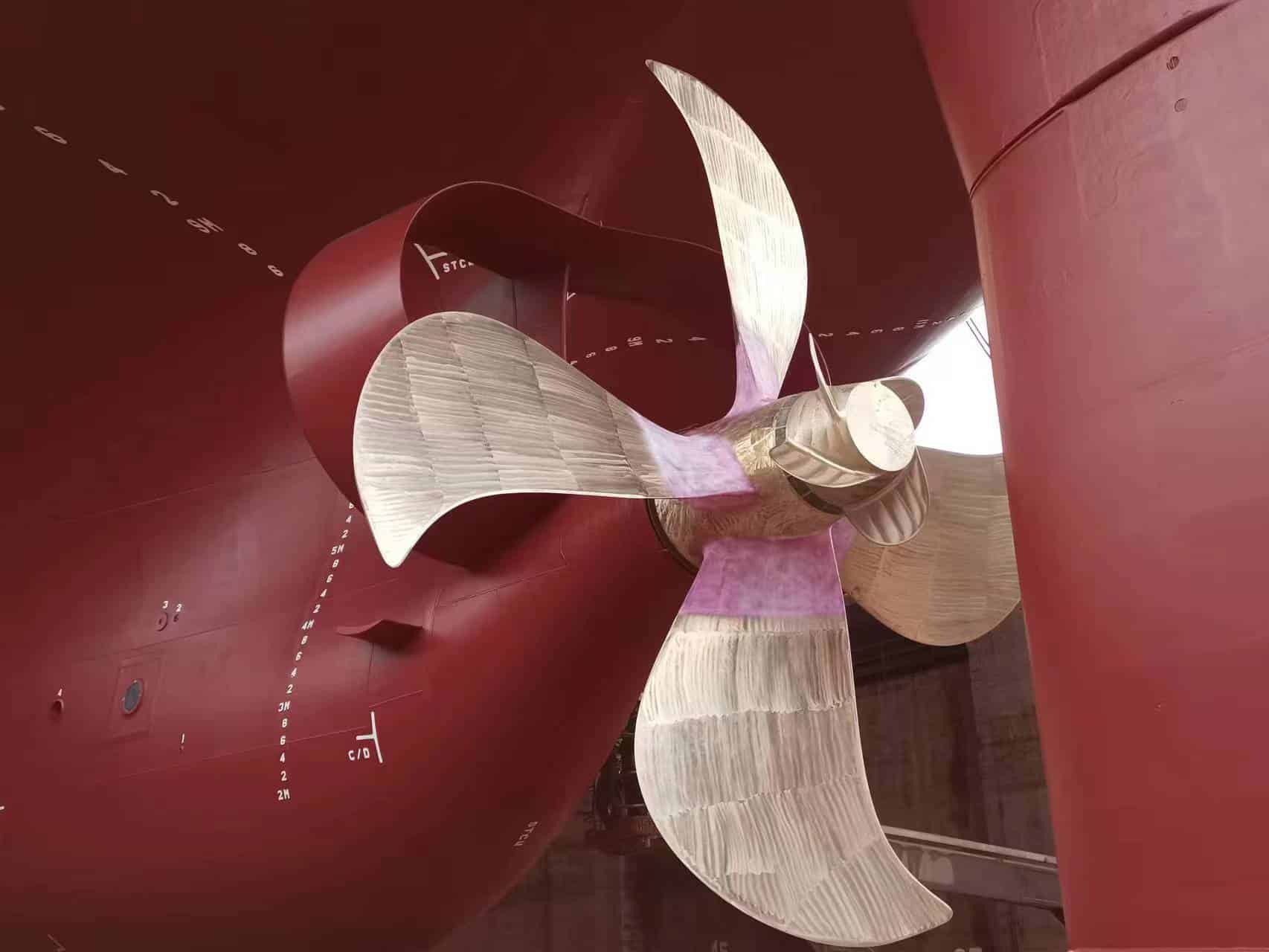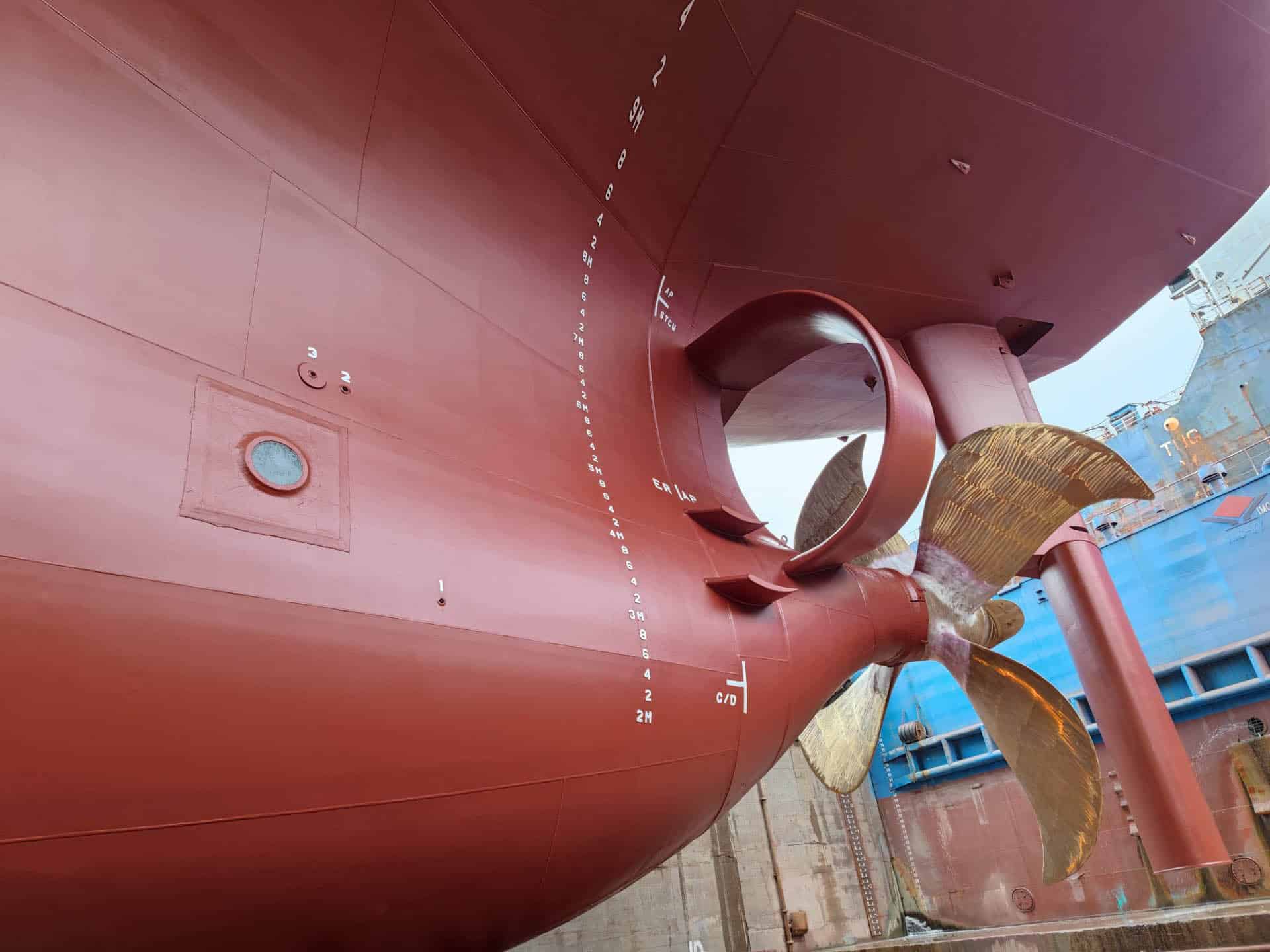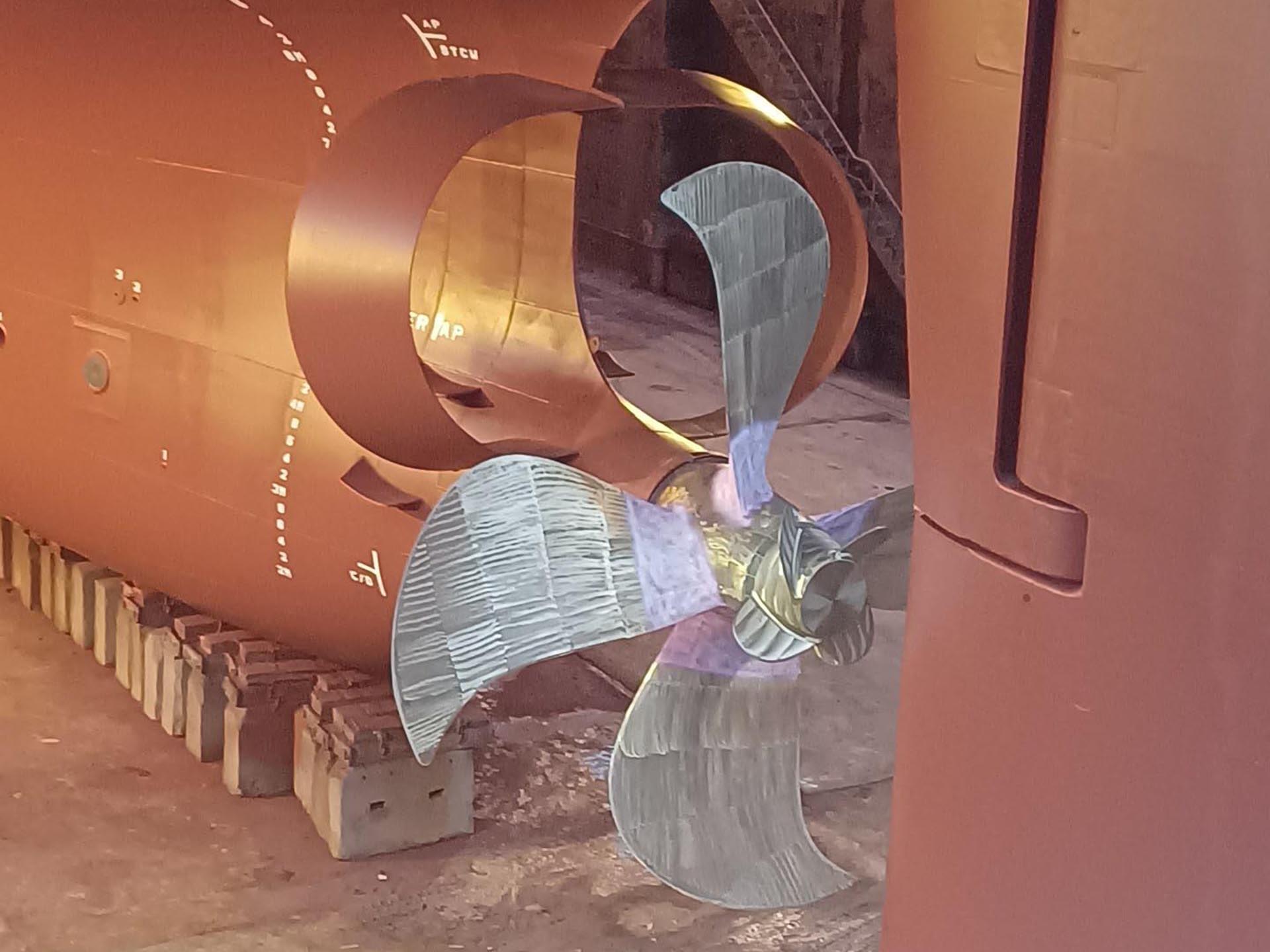Fuel efficiency
Ultranav is commited to having a zero emission fleet in international commercial operations and to be climate neutral by 2050. To reach our goal, we explore, investigate and invest in several devices and technologies to optimise our processes to be more sustainable. We work from the guiding principle: “Every ton of C02 counts”.
Fleet emissions
Ultranav believes that there is untapped potential in realising additional improvements through the implementation of technologies.
There is a direct relationship between the ship’s speed and the consumption. Even though we have invested in energy saving devices and procedures to improve the efficiency of our fleet, strong rates will prompt the fleet to speed up and therefore emit more. Without any energy saving devices emissions would be even higher.
Speed optimisation: We are working with internal and external tools to optimise voyage results. This implies that ships should never unnecessarily navigate at speeds higher than required and therefore reduce consumption. It must be noted that while no carbon levy exists, there are no commercial incentives to further reduce emissions.
Hull cleaning policy: As regular inspection and hull cleaning policy is followed, added with reactive policies to respond to overconsumption that follow from performance analyses.
Auxiliary engine consumption: The load distribution of the electricity generation on board is essential to save fuel, not running with more generators than strictly necessary. Reports are actively monitored.
Performance reviews and accurate vessel description: The performance of each vessel on long-term charter or owned is reviewed and action is taken.
Cargo heating optimisation: A heating strategy reduces the use of fuel to heat cargo (tankers only).
Weather routing: Avoiding bad weather and optimising speeds to prevent high consumption.
Additionally, several energy saving devices were installed, e.g.; PBCF, ducts and silicon paint, and 18 ships were equipped with auto-logging where onboard sensors register parameters like speed, consumption, power etc. High frequency data using sensors allow an improvement of performance management and reduction of emissions.
Fleet emissions 2023

Explanatory notes:
The total emissions include all owned and operated ships (Scope 1 and 3). The EEOI (Energy Efficiency Operational Indicator) is calculated based on operated voyages. Coastal and short distance voyages will by the nature of the trading pattern always have a higher EEOI.
Energy saving devices
In Ultranav we continuesly explore options and devices that can lower emission in order to achieve our goal of reaching net zero in 2050. Two of the devices we have tested and implemented on vessels in our fleet is PBCF (Propeller Boss Cap Fins) and Schneekluth ducts.
PBCF is an energy saving device with the potential to enhance propeller efficientcy with up to 5% fuel oil savings. PBCF have been installed on severel cessels in the Ultranav fleet.
Schneekluth ducts functions alongside PBCF, and offers several benefits to the vessel, including: Increased propulsive efficiency, enhanced manoeuevrability, reduced resistance and drag and improved stability and seakeeping.

PBCF

Schneekluth duct
